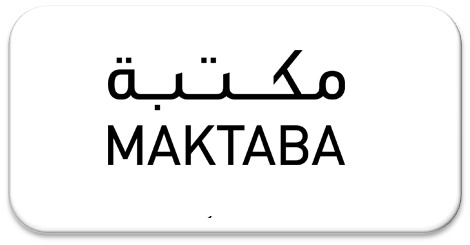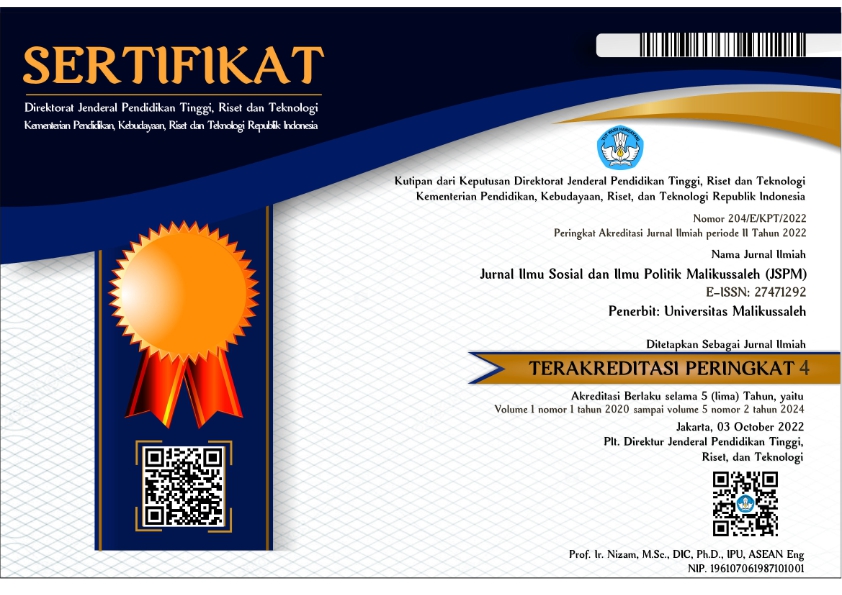LANGUAGE ACQUISITION OF 4-5-YEAR-OLD TODDLERS: INDONESIAN AND ENGLISH IN THE COVID-19 ERA
Abstract
The novel coronavirus, also known as COVID-19, has caused a global pandemic, resulting in widespread social distancing measures for all ages, including toddlers. Such policies have significantly impacted toddlers' language acquisition, particularly in terms of their lack of interaction with peers and teachers at Early Childhood Education (PAUD) schools. In light of this, the current study sought to discover how toddlers aged 4-5 fared regarding language acquisition during their early childhood. To accomplish the goal mentioned earlier, the authors of this study attempted to provide maps with animal and fruit images in both Indonesian and English. Toddlers have had fewer opportunities to interact with their peers at school due to the current circumstances, which include the spread of the new coronavirus and strict social restrictions, resulting in a decrease in vocabulary acquisition through minimal interaction. As a result, this study was carried out to evaluate the language acquisition process of early childhood students. The current study used a descriptive research design with an early childhood student sample. This study's data collection methods included observation and interviews. The results of this study revealed that, while the toddlers could name the pictures given to them when they were younger, their English language skills remained very low.
Novel coronavirus, juga dikenal sebagai COVID-19, telah menyebabkan pandemi global, mengakibatkan tindakan jarak sosial yang meluas di segala usia, termasuk balita. Kebijakan tersebut berdampak signifikan pada penguasaan bahasa balita, terutama dalam hal kurangnya interaksi dengan teman sebaya dan guru di sekolah Pendidikan Anak Usia Dini (PAUD). Sehubungan dengan hal ini, penelitian saat ini berusaha untuk menemukan bagaimana nasib balita berusia 4-5 tahun dalam hal penguasaan bahasa selama masa kanak-kanak mereka. Untuk mencapai tujuan tersebut di atas, penulis penelitian ini mencoba menyediakan peta dengan gambar hewan dan buah dalam bahasa Indonesia dan bahasa Inggris. Balita memiliki lebih sedikit kesempatan untuk berinteraksi dengan teman sebayanya di sekolah karena keadaan saat ini, termasuk penyebaran virus corona baru dan pembatasan sosial yang ketat, mengakibatkan penurunan perolehan kosa kata melalui interaksi yang minimal. Oleh karena itu, penelitian ini dilakukan untuk mengevaluasi proses pemerolehan bahasa siswa usia dini. Penelitian ini menggunakan desain penelitian deskriptif dengan sampel siswa PAUD. Metode pengumpulan data penelitian ini meliputi observasi dan wawancara. Hasil penelitian ini mengungkapkan bahwa, meskipun balita dapat menyebutkan gambar yang diberikan kepada mereka saat masih kecil, kemampuan bahasa Inggris mereka masih sangat rendah.
Keywords
Full Text:
PDFReferences
Amelin. (2019). Understanding the language of children 12-14 months based on non-linguistic elements. Obsesi, 3(1).
Apriana, A., Sutrisno, A. (2022). Bilingualism in Indonesian Children’s Language Acquisition. JOLL: Journal of Language Literature.
Ardiana dan Sodiq. (2000). Psikolinguistik. Jakarta: Universitas Terbuka. Arifuddin. (2010). Neuropsikolinguistik. Jakarta: Raja Grafindo Persada.
Arung, F. (2016). Language Acquisition and Learning on Children. Journal of English Education JEE.
Chaer. (2003). Psikolinguistik: Kajian Teoritik. Jakarta: Rineka Cipta. Dardjowidjojo, Soenjono. (2010). Psikolinguistik. Jakarta: Yayasan Obor Indonesia.
Cole, E. B., & Flexer, C. (2019). Children with hearing loss: Developing listening and talking, birth to six. Plural Publishing.
Collins, H. (2011). Language and practice. Social Studies of Science, 41(2), 271-300.
Dardjowidjojo. (2003). Psikolinguistik. Pengantar Pemahaman Bahasa Manusia. Jakarta: Yayasan Obor Indonesia.
Ellis, Rod. (1990). Instructed Second Language Acquisition. Cambridge: Basil Blackwell, Inc.
Fasli Jalal. (2002). Direktur Jenderal Pendidikan Luar Sekolah dan Pemuda Departemen Pendidikan Nasional, disampaikan pada acara Orientasi Tehnis Proyek Pengembangan Anak Dini Usia.
Fröhlich, M., Sievers, C., Townsend, S. W., Gruber, T., & van Schaik, C. P. (2019). Multimodal communication and language origins: integrating gestures and vocalizations. Biological Reviews, 94(5), 1809-1829.
Gentner, D. & Namy, L.L. (2006). Analogical processes in language learning. Journal of Current Directions in psychological science, Vol. 15, No. 6.
Klahr, D., & Wallace, J. G. (2022). Cognitive development: An information-processing view. Routledge.
Kridalaksana. (2002). Struktur, kategori, dan fungsi dalam teori sintaksis. Universitas Katolik Indonesia Atma Jaya
Leseman, P. P., Henrichs, L. F., Blom, E., & Verhagen, J. (2019). 15 Young Monolingual and Bilingual Children’s Exposure to Academic Language as Related to Language Development and School Achievement. Learning through language: Towards an educationally informed theory of language learning, 205.
Lieberman, P. (2016). The evolution of language and thought. J. Anthropol. Sci, 94, 127-146.
Luk, G., Mesite, L., & Guerrero, S. L. (2020). The onset age of second language acquisition and fractional anisotropy variation in multilingual young adults. Journal of Neurolinguistics, 56, 100937.
Mehrabian, A. (2017). Communication without words. In Communication theory (pp. 193-200). Routledge.
Miles dan Huberman. (2014). Analisis data kualitatif: buku sumber tentang metode–metode baru (terjemahan Tjetjep Rohendi Rohidi). Jakarta: UI Press.
Muntasir, M., Rahman, F., & Haekal, M. (2022). The Effects Of Corrective Feedback On Fluency And Accuracy In 4/3/2 Activity: A Case Of Students At ELTO Spell-Out Program. Elite: English and Literature Journal, 9(1), 42-54.
Muntasir, M., & Akbar, I. (2023). Revisiting the Significance of ZDP and Scaffolding in English Language Teaching. JETLEE: Journal of English Language Teaching, Linguistics, and Literature, 3(1), 40-45.
Nazir. (2011). Metode penelitian. Jakarta: Ghalia Indonesia.
Nippold, M. A., Frantz-Kaspar, M. W., & Vigeland, L. M. (2017). Spoken language production in young adults: Examining syntactic complexity. Journal of Speech, Language, and Hearing Research, 60(5), 1339-1347.
Palenkahu. (2005). Pemerolehan Bahasa Pertama Anak Kembar Usia Dua Tahun Delapan Bulan
Pandang Morfosintaksis. LENSA, 1(1).
Rahman, F., & Saputra, N. (2021). English as International Language Revisited: Implications on South Korea’s ELT Context. Scope: Journal of English Language Teaching, 6(1), 08-15.
Ratnaningsih, E. (2017). An Analysis of the First Language Acquisition: A Two Years Girl. Ahmad Dahlan Journal of English Studies (ADJES).
Salnita.(2019). Language Acquisition for Early Childhood.
Shobihi, I., Rahman, T., & Muslihin, H. Y. (2022). Pengaruh Permainan Modifikasi Squat Relay Terhadap Motorik Kasar Anak Usia 4-5 Tahun. JURNAL PAUD AGAPEDIA, 6(2), 143-146.
Solehan. (2011). Pendidikan bahasa Indonesia. Jakarta: Universitas Terbuka.
Steinberg, D. D., Nagata, H., & Aline, D. P. (2001). Psycholinguistics: Language, mind, and world (2nd ed). Harlow, England ; New York: Longman.
Troike. (2006). Introducing Second Language. Cambridge: Cambridge University Press.
Yogatama, A. (2011). Pemerolehan Bahasa Pada Anak Usia 3 Tahun Ditinjau Dari Sudut
Yumi. (2019). Children’s peformance sentence in simple construction time. Obsesi, 3(1).
DOI: https://doi.org/10.29103/jspm.v4i1.10944
 Article Metrics
Article Metrics
 Abstract Views : 228 times
Abstract Views : 228 times
Refbacks
- There are currently no refbacks.
Copyright (c) 2023 Zurriyati Zurriyati, Alemina Br Perangin-angin, Fika Emylia Effendi, Khairunnisa Tambunan

This work is licensed under a Creative Commons Attribution-ShareAlike 4.0 International License.
INDEXED BY:




.png)









Redaksi Jurnal Ilmu Sosial dan Ilmu Politik Malikussaleh (JSPM): Gedung Fakultas Ilmu Sosial dan Ilmu Politik Universitas Malikussaleh. Kampus Bukit Indah Jln. Sumatera No.8, Kec. Muara Satu Kota Lhokseumawe, Prov. Aceh, Indonesia. eMail: jspm@unimal.ac.id

This work is licensed under a Creative Commons Attribution-NonCommercial-ShareAlike 4.0 International License



.png)



